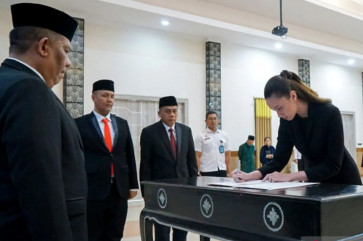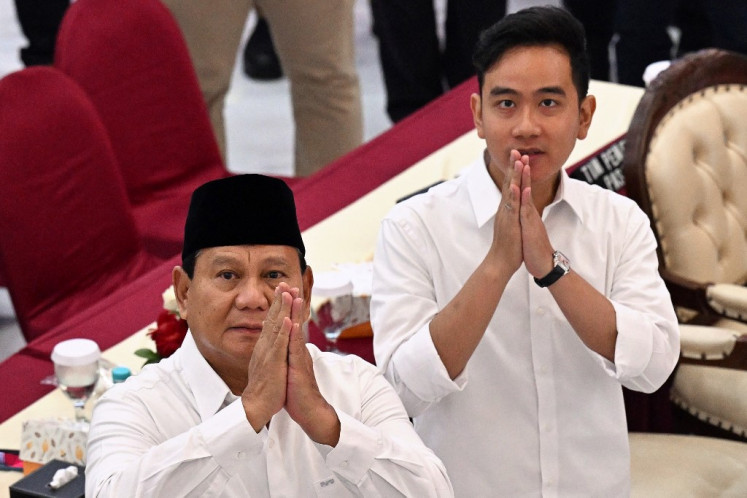BP plans third LNG train for Tangguh project in 2011
London-based BP Plc plans to start building the company’s third liquefied natural gas (LNG) train with a production capacity of 3
Change Size

L
ondon-based BP Plc plans to start building the company’s third liquefied natural gas (LNG) train with a production capacity of 3.8 metric tons per annum (mtpa) at its Tangguh plant in Papua next year, a high-ranking official told reporters Thursday.
Upstream regulator BP Migas’s deputy chairman Hardiono said BP had informed the regulator about the plan.
“They have initiative to start building the third train next year. The train is expected to have a
production capacity of 3.8 mtpa and to be on stream by 2014,” Hardiono said.
He refused to give more details of the schedule for the construction, saying that BP Migas was still waiting for BP’s formal proposal for the project.
“The process is still quite long as they must submit a plan, including its AFP [Authorization for Expenditure],” Hardiono said.
However, BP Indonesia president William Lin said the company had not made a decision yet. “We are evaluating options for the further development and expansion of Tangguh. No decisions have been made at this time,” he said in an emailed statement.
Tangguh is a massive gas project located in the Bintuni Bay area in Papua, where total proven gas reserves amount to some 14.4 trillion cubic feet.
The Tangguh LNG plant consists of two production units, each with a production capacity of 3.8 million tons of LNG per year.
BP started the first production unit, called train 1, in February 2009 and the second one, train 2, in July 2009.
The project has long-term contracts to supply 2.6 million tons of LNG a year to the Fujian terminal in China, 1.5 million tons a year to K-Power and POSCO in South Korea, and a flexible contract to supply up to 3.7 million tons a year to Sempra’s LNG terminal in Baja California, Mexico.
Hardiono said the LNG from the third train would likely be exported to traditional markets, meaning Japan, South Korea and Taiwan, which have been the major importers for Indonesia’s LNG.
BP is the operator of the Tangguh field, holding a 37.16 percent stake in the project. Other partners are MI Berau B.V (16.3 percent), CNOOC Ltd (13.9 percent), Nippon Oil Exploration (Berau) Ltd (12.23 percent), KG Berau/KG Wiriagar (10 percent), LNG Japan Corporation (7.35 percent) and Talisman (3.06 percent).
Indonesia expects to produce 7,769 million standard cubic feet of gas (mmscfd) in 2011 or slightly higher than this year’s target of 7.758 mmscfd.
BP’s Tangguh gas field has been the fourth largest contributor to national gas production. In 2011, BP Migas expects the field to produce 879.57 mmscfd, up from this year’s target of 859,16 mmscfd.
BP is also currently operating another gas project: the Sanga-Sanga project in East Kalimantan. In this project, the company has teamed up with Italy’s ENI.
Last month, BP won exploration rights to develop the North Arafura oil and gas block in the southern part of Papua, about 400 kilometers from the Tangguh field. The company has pledged to spend US$3.4 million for exploration activities in the first three years in the newly secured block.









